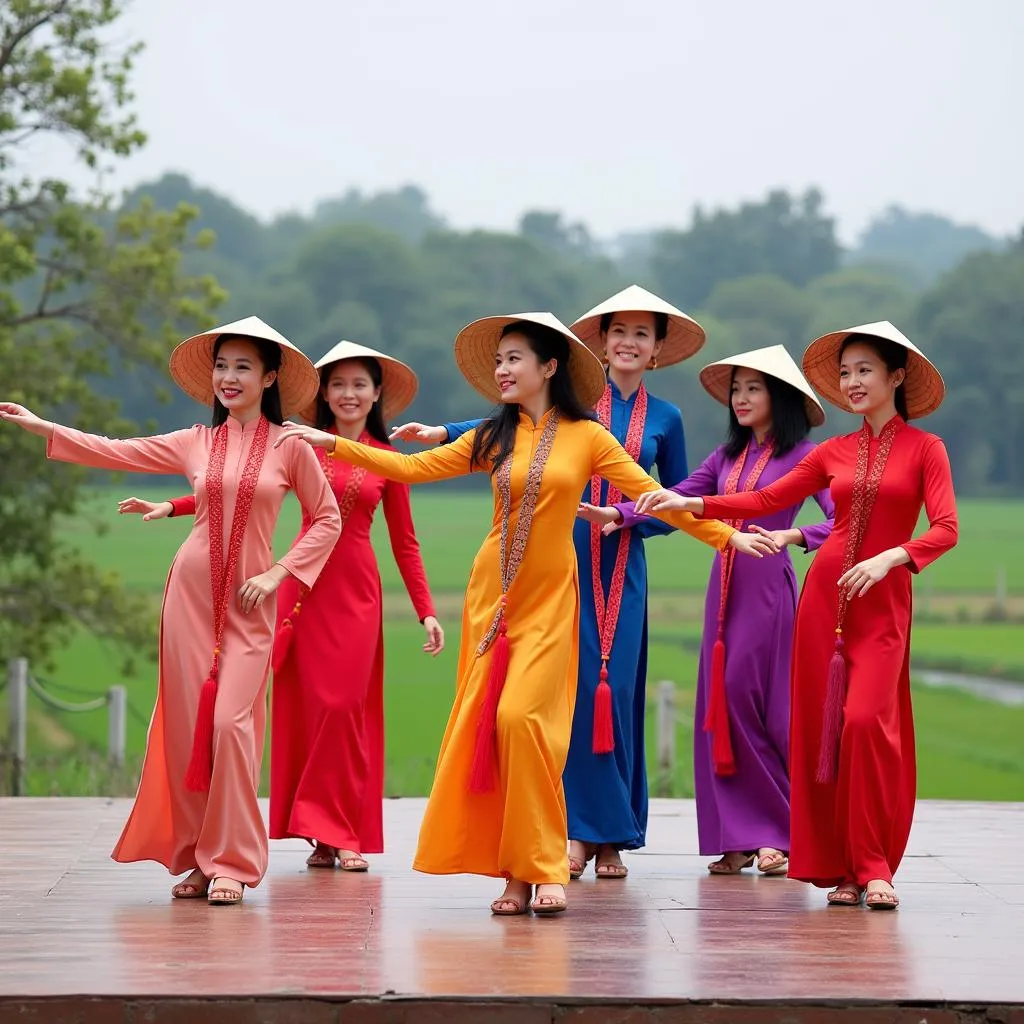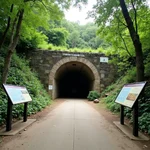The IELTS Speaking test often includes questions about cultural topics, and describing a traditional dance from your country is a common subject. This topic allows candidates to showcase their knowledge of local traditions while demonstrating their English language skills. Let’s explore how to effectively answer questions related to traditional dances in the IELTS Speaking exam.
Part 1: Introduction and Interview
In Part 1, the examiner may ask some general questions about dancing or traditional customs. Here are some potential questions and sample answers:
- Do you enjoy dancing?
- What types of dances are popular in your country?
- Have you ever learned a traditional dance?
Let’s focus on question 2:
Sample answer (Band 7-8):
“In my country, Vietnam, we have a rich variety of traditional dances. One of the most popular is the fan dance, which is often performed at cultural festivals and weddings. Another well-known dance is the bamboo dance, where dancers skillfully step between moving bamboo poles. These dances are not only entertaining but also reflect our cultural heritage and historical narratives.”
Describe a place in your country where you experienced a different culture might be an interesting topic to explore if you’ve witnessed traditional dances in a specific region of your country.
Part 2: Long Turn (Cue Card)
Here’s a sample cue card related to describing a traditional dance:
Describe a traditional dance from your country
You should say:
- What the dance is called
- When people perform this dance
- What the dance represents or symbolizes
- And explain why you think this dance is important to your cultureSample answer (Band 8-9):
“I’d like to talk about the Non La dance, a traditional Vietnamese dance that showcases our country’s rich cultural heritage. This graceful dance is named after the iconic conical hat worn by the performers.
The Non La dance is typically performed during important festivals, particularly the Lunar New Year celebrations and harvest festivals. It’s also a popular choice for cultural exhibitions and tourism events, where it serves as a vibrant representation of Vietnamese culture.
This dance symbolizes the beauty and resilience of Vietnamese women, particularly those working in the rice fields. The dancers’ movements mimic the gentle swaying of rice stalks in the wind and the rhythmic motions of farm work. The conical hats used in the dance not only serve as props but also represent protection and perseverance under the hot sun.
I believe this dance is crucial to our culture for several reasons. Firstly, it preserves our agricultural heritage, reminding us of our roots and the hard work of our ancestors. Secondly, it celebrates the strength and grace of Vietnamese women, who have played a vital role in our society. Lastly, the Non La dance serves as a unique cultural ambassador, allowing us to share our traditions with the world in a visually stunning and memorable way.
The dance’s enduring popularity and its ability to evoke a sense of national pride make it an integral part of our cultural identity. It’s not just a performance, but a living link to our past and a beautiful expression of who we are as a people.”
 Traditional Vietnamese Non La dance performance
Traditional Vietnamese Non La dance performance
Follow-up questions:
- How has this traditional dance evolved over time?
- Do young people in your country show interest in learning traditional dances?
Sample answer for question 1 (Band 8-9):
“The Non La dance has undergone subtle transformations over the years while maintaining its core essence. Originally, it was a more simplistic representation of rural life, but it has evolved to incorporate more intricate choreography and vibrant costumes to appeal to modern audiences. The dance now often features more elaborate storylines, sometimes blending traditional elements with contemporary themes to make it more relatable to younger generations. Despite these changes, the fundamental symbolism and graceful movements remain intact, ensuring that the dance continues to be an authentic cultural expression.”
Part 3: Two-way Discussion
In this part, the examiner might ask more abstract questions about traditional dances and their role in society. Here’s a sample question and response:
Examiner: “What role do traditional dances play in preserving a country’s culture?”
Sample answer (Band 8-9):
“Traditional dances play a pivotal role in preserving a country’s culture in multiple ways. Firstly, they serve as a tangible link to our ancestors, allowing us to experience and understand historical narratives and social customs through movement and music. This kinesthetic connection to the past is often more powerful and memorable than written or spoken accounts.
Secondly, traditional dances act as a repository of cultural knowledge, encoding information about a society’s values, beliefs, and way of life. For instance, many dances reflect agricultural cycles or important historical events, thus preserving this knowledge for future generations.
Moreover, these dances foster a sense of cultural identity and community cohesion. When people participate in or watch traditional dances, they often experience a profound sense of belonging and connection to their heritage. This is particularly important in our increasingly globalized world, where maintaining cultural distinctiveness can be challenging.
Lastly, traditional dances serve as a form of cultural diplomacy. They provide a visually striking and emotionally resonant way to share one’s culture with others, promoting intercultural understanding and appreciation. This aspect is crucial in our interconnected world, where cultural exchange can lead to greater global harmony.
In essence, traditional dances are not mere entertainment but living, breathing archives of a culture’s history, values, and identity. They play a vital role in ensuring that the essence of a culture is not lost but continues to thrive and evolve with each generation.”
 Traditional dance preserving cultural heritage
Traditional dance preserving cultural heritage
Key Vocabulary and Phrases
To achieve a high score in the IELTS Speaking test when discussing traditional dances, consider using the following vocabulary and phrases:
-
Cultural heritage /ˈkʌltʃərəl ˈherɪtɪdʒ/ (noun): The legacy of physical artifacts and intangible attributes of a group or society.
Example: “The Non La dance is an important part of Vietnam’s cultural heritage.” -
Symbolize /ˈsɪmbəlaɪz/ (verb): To represent or stand for something.
Example: “The movements in the dance symbolize the daily life of farmers.” -
Choreography /ˌkɒriˈɒɡrəfi/ (noun): The sequence of steps and movements in dance.
Example: “The choreography of the dance has become more complex over time.” -
Preserve /prɪˈzɜːv/ (verb): To maintain something in its original state or protect from harm.
Example: “Traditional dances help to preserve ancient customs and beliefs.” -
Evoke /ɪˈvəʊk/ (verb): To bring a feeling, memory, or image to mind.
Example: “The dance evokes a strong sense of national pride.” -
Intricate /ˈɪntrɪkət/ (adjective): Very complicated or detailed.
Example: “The dance features intricate hand movements that tell a story.” -
Resonant /ˈrezənənt/ (adjective): Evoking or suggesting images, memories, and emotions.
Example: “The dance provides a resonant connection to our cultural roots.”
Describe a time when you experienced a festival in another country could be an interesting way to compare traditional dances from different cultures.
Examiner’s Advice
To excel in the IELTS Speaking test when describing traditional dances:
-
Practice describing dances in detail, focusing on movements, costumes, and cultural significance.
-
Develop a rich vocabulary related to dance, culture, and traditions.
-
Prepare personal anecdotes about experiences with traditional dances to make your answers more engaging.
-
Stay informed about the cultural importance of dances in your country and be ready to discuss their role in society.
-
Use a variety of grammatical structures and tenses to demonstrate language proficiency.
-
Speak clearly and confidently, using appropriate intonation to convey enthusiasm for the topic.
Remember, the key to a high score is not just knowing about the dance, but being able to articulate its significance fluently and coherently. Practice regularly, and don’t be afraid to express your personal views on the importance of traditional dances in modern society.
Describe a place in your country that is well-known for its festivals could provide additional context for discussing where traditional dances are often performed.
By following these guidelines and incorporating rich vocabulary and cultural insights, you’ll be well-prepared to discuss traditional dances confidently in your IELTS Speaking test.


